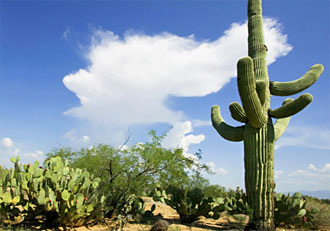
|  |  |  Editorials | Environmental | September 2008 Editorials | Environmental | September 2008  
Cactus Thieves Prickle Conservationists
 Shannon Firth - Finding Dulcinea Shannon Firth - Finding Dulcinea
go to original


| | Collectors and pleasure-seekers steal and smuggle rare desert plants from the American Southwest and Mexico. | | |
Robbed of their cacti by collectors, souvenir hunters and "narco-tourists," conservationists in the southwestern United States and Mexico are upset by the depletion.

In Mexico, poor villagers often sell rare cacti to smugglers for a little money; smugglers then sell the treasures to collectors at a higher cost. In the United States, the greater problems appear to be souvenirs and hallucinogens. Dr. Martin Terry, a biologist at Sul Ross University in West Texas explains that tourists who come to scope out the landscape dig up cacti and FedEx them home.

Peyote plants are smuggled by narco-tourists seeking their legendary hallucinatory powers; sometimes the physically similar Star cacti, which are endangered, are mistaken for peyote. The only people who can legally harvest the peyote plant are Peyoteros who then sell the plant to Huichola Indians of the Native American Church for religious purposes.

Regardless of intent, most thieves get away with the crime because the sparsely populated desert regions are difficult places to enforce conservation laws. Arizona has begun implanting microchips to try to protect its cacti populations, specifically the Saguaro, its "signature cactus" and the bearer of Arizona’s state flower.

Cacti are especially popular in The Netherlands, Japan and the Czech Republic, and Web sites illegally selling cacti are abundant. Time magazine cites a 2005 Mexican study which estimated that there are close to 4,000 such sites. To evade prosecution, sites frequently change servers.

The saguaro cactus, which stands between 15 and 20 feet tall, can sell for $60 a foot. |

 |
|  |



